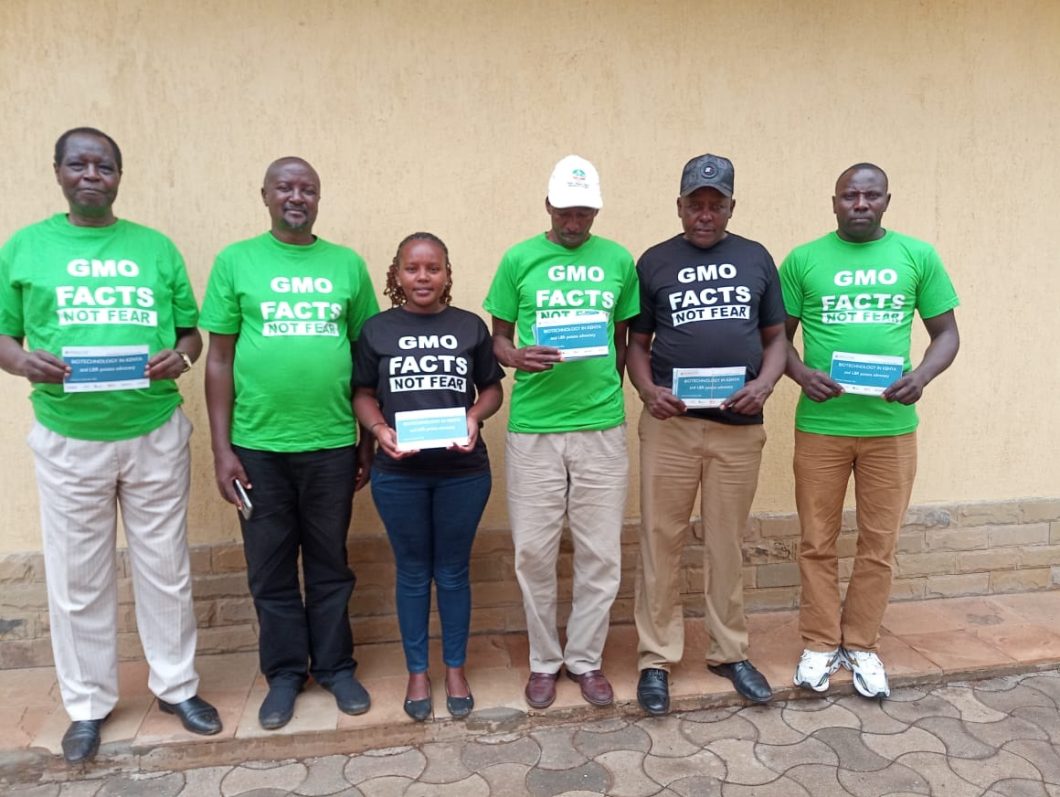When Kenya gained independence, the country’s agriculture had developed to the level of ecological zoning and crops that could thrive well-identified and communities were encouraged to take on farming by the Nation’s founding fathers. While some regions were allocated sugarcane and cotton farming, others tea and coffee, central Kenya region was given Irish potato farming among other crops.
These crops became synonymous with a regional identity. Children in school were taught about crops and regions where they were grown during agriculture and geography lessons. During such lessons, the Irish potato featured prominently in the Central Kenya region and the Kikuyu community.
During the most recent visit to the region which started on April 4th to the 9th 2024, my team worked with different leaders from Murang’a, Nyeri, Kirinyaga, and Nyandarua counties to map out a route to use in the upcoming “GMO FACTS not FEAR” farmer sensitization sessions on the Late Blight Resistant potato.

Potato Farmers Association chairpersons and officials from Nyeri, Murang’a, Kirinyaga, and Nyandarua counties. They expressed hope that upon release, the Late blight-resistant potato would bring back the lost hope in farmers who were opting for other crops. Photo credit: Kataru Concepts.
We also worked with the local leaders drawn from potato farmers associations of the four counties to decide on probable locations to meet farmers when we start going around the region in two weeks to give the various chairpersons sufficient time to mobilize communities for the event since we intent to “go loud” to meet every potato farmer that matters.
The potato situation is bad
As I have said earlier, the Kenya region has always been associated with Irish potato farming. However, from our findings, the situation is in dire stress. Most farmers have stopped growing potatoes due to late blight disease which has always failed their crop, reduced yields, and made growing Irish potato expensive from the number of times the crop has to be sprayed to achieve results. These farmers have shifted to growing bananas, sweet potatoes, avocados, and other crops they believe have fewer challenges.
For example in Nyeri county, both potato farmer leaders and extension service providers confirmed that serious potato farming had been confined to one constituency out of the five in the county. In Murang’a county, the potato business is not in its usual state, while in Kirinyaga county, officials at the Ministry of Agriculture could not point out where large-scale farming of the crop is happening.


Left: Extension officers at the Nyeri County Department of Agriculture. Right: Extension officers at the Kirinyaga County office of the Director of Agriculture. These extension providers expressed their fear that most farmers had lost interest in growing the Irish potato due to late blight disease and instead went for other crops that had fewer challenges. Photo credit: Kataru Concepts.
In most of these traditional Irish potato growing zones, smallholder farmers who still hold to the crop have reduced acreage to the level of producing just a little for their family’s use and opted to grow sweet potatoes.
Late blight resistant potato is good news to the farming fraternity
As we prepare to hit the region with several meetings with farmers the conclusion from our partners (national government and county government players in the industry, the local administration, the political arm that expressed so much enthusiasm in our visiting the areas with a solution and offered to help mobilize and organize the meetings), is that the solution lies in the yet to be released GMO potato.
To date, no government official, farmer, or trader we have interacted with believes the myths about GMOs. Their interest has shifted to how much the farmer can make from the new variety and hope for its quick release. In a nutshell, Central Kenya has joined other visited regions of Kenya in singing “Give us the GMO potato seed!”

